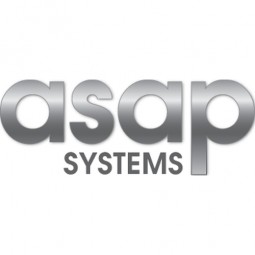
Technology Category
- Functional Applications - Enterprise Asset Management Systems (EAM)
- Functional Applications - Inventory Management Systems
Applicable Industries
- Finance & Insurance
Applicable Functions
- Logistics & Transportation
- Warehouse & Inventory Management
Use Cases
- Real-Time Location System (RTLS)
- Track & Trace of Assets
Services
- System Integration
The Customer
Midwest Distribution
About The Customer
Midwest Distribution is a rapidly growing wholesale distribution company. As the company expanded, it faced the challenge of managing an increasing number of assets and employees. The company was experiencing issues with asset management, including employees trading equipment without proper tracking, leading to lost assets and unauthorized changes in asset locations. The company needed a robust, efficient, and cost-effective solution to manage its growing number of assets and ensure smooth operations.
The Challenge
Midwest Distribution, a rapidly growing company, was facing a significant challenge in accurately tracking its increasing number of assets due to its growth and the addition of more employees. The company was experiencing issues with employees trading monitors, PCs, and tablets throughout the day, with no effective system in place to track these movements. This lack of a robust tracking system led to problems with lost assets and unauthorized changes in asset locations, which were often not known to the IT Department. The need for a solution was urgent to ensure the smooth operation of the company and to prevent further loss of assets.
The Solution
Midwest Distribution found the perfect solution in an easy-to-use, cost-effective Inventory System and Asset Tracking System. This system was designed to enhance the company's ability to track its growing number of assets. Since its implementation, the company has seen a significant reduction in cases of lost assets or assets changing locations without the knowledge of the IT Department. The Barcode-Based Asset Tracking System provided by ASAP Systems not only helped in tracking assets but also saved the company additional money through increased efficiency. It eliminated the need for maintaining separate records for assets, thus reducing labor costs. The system also streamlined internal processes and procedures, making it a convenient single reference point for IT Help Desk Techs to quickly reference warranty status, replacement costs, and conduct audits to ensure correct location and employee information.
Operational Impact
Quantitative Benefit

Case Study missing?
Start adding your own!
Register with your work email and create a new case study profile for your business.
Related Case Studies.

Case Study
Real-time In-vehicle Monitoring
The telematic solution provides this vital premium-adjusting information. The solution also helps detect and deter vehicle or trailer theft – as soon as a theft occurs, monitoring personnel can alert the appropriate authorities, providing an exact location.“With more and more insurance companies and major fleet operators interested in monitoring driver behaviour on the grounds of road safety, efficient logistics and costs, the market for this type of device and associated e-business services is growing rapidly within Italy and the rest of Europe,” says Franco.“The insurance companies are especially interested in the pay-per-use and pay-as-you-drive applications while other organisations employ the technology for road user charging.”“One million vehicles in Italy currently carry such devices and forecasts indicate that the European market will increase tenfold by 2014.However, for our technology to work effectively, we needed a highly reliable wireless data network to carry the information between the vehicles and monitoring stations.”

Case Study
Safety First with Folksam
The competitiveness of the car insurance market is driving UBI growth as a means for insurance companies to differentiate their customer propositions as well as improving operational efficiency. An insurance model - usage-based insurance ("UBI") - offers possibilities for insurers to do more efficient market segmentation and accurate risk assessment and pricing. Insurers require an IoT solution for the purpose of data collection and performance analysis

Case Study
Smooth Transition to Energy Savings
The building was equipped with four end-of-life Trane water cooled chillers, located in the basement. Johnson Controls installed four York water cooled centrifugal chillers with unit mounted variable speed drives and a total installed cooling capacity of 6,8 MW. Each chiller has a capacity of 1,6 MW (variable to 1.9MW depending upon condenser water temperatures). Johnson Controls needed to design the equipment in such way that it would fit the dimensional constraints of the existing plant area and plant access route but also the specific performance requirements of the client. Morgan Stanley required the chiller plant to match the building load profile, turn down to match the low load requirement when needed and provide an improvement in the Energy Efficiency Ratio across the entire operating range. Other requirements were a reduction in the chiller noise level to improve the working environment in the plant room and a wide operating envelope coupled with intelligent controls to allow possible variation in both flow rate and temperature. The latter was needed to leverage increased capacity from a reduced number of machines during the different installation phases and allow future enhancement to a variable primary flow system.

Case Study
Automated Pallet Labeling Solution for SPR Packaging
SPR Packaging, an American supplier of packaging solutions, was in search of an automated pallet labeling solution that could meet their immediate and future needs. They aimed to equip their lines with automatic printer applicators, but also required a solution that could interface with their accounting software. The challenge was to find a system that could read a 2D code on pallets at the stretch wrapper, track the pallet, and flag any pallets with unread barcodes for inspection. The pallets could be single or double stacked, and the system needed to be able to differentiate between the two. SPR Packaging sought a system integrator with extensive experience in advanced printing and tracking solutions to provide a complete traceability system.

Case Study
Transforming insurance pricing while improving driver safety
The Internet of Things (IoT) is revolutionizing the car insurance industry on a scale not seen since the introduction of the car itself. For decades, premiums have been calculated using proxy-based risk assessment models and historical data. Today, a growing number of innovative companies such as Quebec-based Industrielle Alliance are moving to usage-based insurance (UBI) models, driven by the advancement of telematics technologies and smart tracking devices.
Case Study
Enhancing Security and Compliance in Remitly's Global Money Transfer Service with Fastly
Remitly, an online remittance service, was faced with the challenge of securing its proprietary global transfer network. The company needed a security solution that could meet PCI requirements and protect customers' sensitive transactions through its mobile application. The solution had to be capable of defending against new and emerging attack types without impacting performance. Remitly also had to deal with irregular traffic patterns, such as a sudden spike in account transfers from a small network segment on the Pacific coastline of South America. The company needed to determine in real time whether such traffic indicated an attack or valid requests. A traditional web application firewall (WAF) would not be able to distinguish this traffic, potentially leading to customer frustration if the IP was blacklisted.







